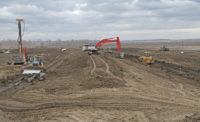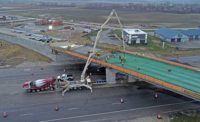From there, equipment was delivered to the refinery site, a logistical exercise that required BP and its contractors to complete more than 1,500 heavy lifts of components weighing more than 100 tons..
The 8,000 tradesmen charged with performing these and other tasks are coordinating their activities with those of 1,850 full-time employees who operate the existing refinery. To date, BP has managed the job safely, having logged more than a year, or 13 million man-hours, without a lost-time incident, according to Shoriak.
Local union halls have supplied much of the required craft labor, with carpenters, civil workers, ironworkers and pipe fitter welders rotating on and off site, Shoriak says.
While the project has raised the ire of environmentalists, BP maintains it is simply replacing older equipment with new equipment. It also says the plant will emit fewer pollutants than it does currently.
Regulated air emissions will be 4% lower, says Brad Etlin, director of government and public affairs for the refinery. In 2010 Etlin indicated that about $1.4 billion is being spent on improvements to meet environmental standards.
A water-discharge permit issued in 2007 allows the refinery, whose five-year upgrade is due for completion in 2013, to release higher amounts of ammonia and suspended solids into Lake Michigan. However, company spokesman Scott Dean says BP is applying for a new water permit that will maintain current water standards.







Post a comment to this article
Report Abusive Comment